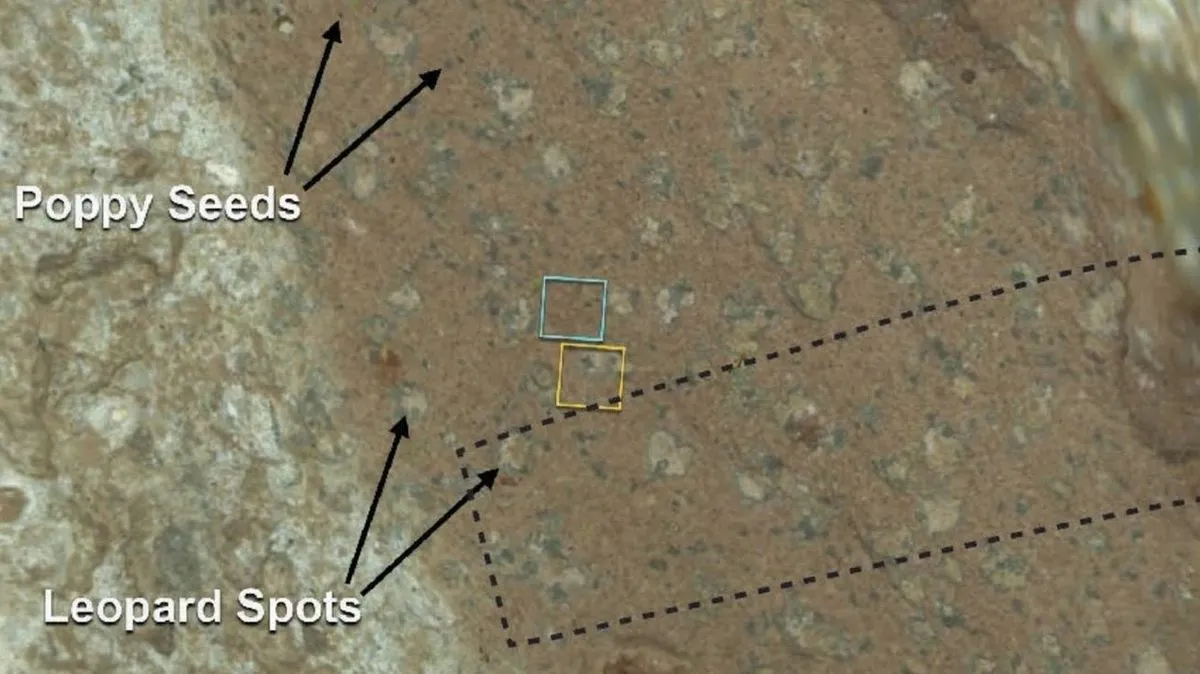
An intriguing arrowhead-shaped rock on Mars, located in the Jezero Crater, has left scientists fascinated and puzzled due to its features that may suggest ancient microbial activity on the Red Planet. In July of last year, NASA announced that this rock, examined by the Perseverance rover, presented some of the most compelling evidence yet pointing to the existence of ancient microbial life billions of years ago, during a time when Mars was significantly wetter than it is today.
Earlier this week, at the Lunar and Planetary Science Conference in Texas, scientists involved in this discovery shared their findings publicly for the first time. They detailed the rock's chemical signatures and structures, which continue to provide tantalizing hints about ancient Martian microbial life. The fine-grained mudstone, dubbed Cheyava Falls—named after the highest waterfall in Arizona's Grand Canyon—sits at the edge of an ancient river valley known as Neretva Vallis, which runs along the inner wall of the crater.
The Cheyava Falls rock exhibits striking spots of black, blue, or greenish hues, affectionately referred to by researchers as poppy seeds. Alongside these unique features are numerous dark-rimmed, millimeter-sized splotches known as leopard spots. Instruments aboard Perseverance have shown that several rocks containing these features are rich in iron, with varying oxidation states and levels of redness—a significant indicator of organic matter activity that may have bleached the rocks of their natural red color.
According to Joel Hurowitz, the deputy principal investigator of the PIXL instrument on Perseverance’s robotic arm, the chemical reactions observed in these rocks are typically associated with microbially-driven organic matter respiration on Earth. In addition to these features, the discovery team also identified calcium sulfate veins running through the rock, which suggests that water may have once flowed through it. While some of these features could be explained by non-biological processes, such as exposure to intense heat from volcanic activity, ongoing analysis indicates that the rock was likely never exposed to such conditions.
Scientists believe that the Neretva Vallis channel was carved out eons ago by water flowing into the crater. One prevailing theory posits that mud rich in organic compounds was deposited into the valley, eventually cementing into the Cheyava Falls rock. Alternatively, it is possible that a second episode of water seeped into the rock after it had formed, leading to the unique features currently observed. Hurowitz noted, “The rocks we investigated appear to fill the Neretva Vallis channel.”
Despite the intriguing findings, it is important to note that Perseverance is not equipped with life-detection instruments. Instead, its mission focuses on collecting scientifically significant samples which will eventually be returned to Earth for more detailed analysis. Hurowitz emphasized the necessity for further laboratory, field, and modeling studies to investigate such features in greater depth, ultimately aiming to determine whether they were formed by life.
However, the road to a successful Mars Sample Return mission is fraught with challenges. The costs of the initiative have surged to $11 billion, prompting NASA to reevaluate its approach and seek innovative solutions from research centers, private industry, and academic institutions. Earlier this year, former NASA administrator Bill Nelson revealed that the agency is considering two distinct options for returning to Earth approximately 30 cigar-sized tubes containing Martian samples collected by Perseverance, including the Cheyava Falls specimen.
Both proposed strategies differ in the hardware deployment methods on Mars; however, each would necessitate Congress to allocate $300 million for the mission to initiate launch proceedings by 2030, with sample return expected between 2035 and 2039. Scientists are particularly eager to analyze the Cheyava Falls sample, as it holds the potential to answer one of humanity’s most profound questions: Are we alone in the universe?